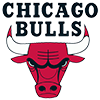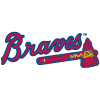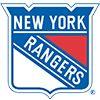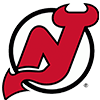To that end, there's a down and dirty means of identifying viable cash game pitchers – The Rule of 13. To be safe for cash play, the pitcher should be expected to total 13 innings plus strikeouts. That's it, simple as that.
To be clear, 13 is something more than arbitrary but less than the ideal gas law. It's empirical but has worked quite well as a guideline.
So what pitchers make for reliable cash game starters? Here's a table showing 2015 data, including the percentage of starts satisfying the Rule of 13, the percent of those at home, average innings pitched per start, strikeouts per start and the all-important sum of the average innings and strikeouts per start.
| NAME | GS | R13 PCT | HOME PCT | IP/GS | K/GS | (IP+K)/GS |
|---|---|---|---|---|---|---|
| Clayton Kershaw |
To that end, there's a down and dirty means of identifying viable cash game pitchers – The Rule of 13. To be safe for cash play, the pitcher should be expected to total 13 innings plus strikeouts. That's it, simple as that.
To be clear, 13 is something more than arbitrary but less than the ideal gas law. It's empirical but has worked quite well as a guideline.
So what pitchers make for reliable cash game starters? Here's a table showing 2015 data, including the percentage of starts satisfying the Rule of 13, the percent of those at home, average innings pitched per start, strikeouts per start and the all-important sum of the average innings and strikeouts per start.
| NAME | GS | R13 PCT | HOME PCT | IP/GS | K/GS | (IP+K)/GS |
|---|---|---|---|---|---|---|
| Clayton Kershaw | 33 | 85 | 54 | 7.1 | 9.1 | 16.2 |
| Max Scherzer | 33 | 85 | 43 | 6.9 | 8.4 | 15.3 |
| Chris Sale | 31 | 77 | 50 | 6.7 | 8.8 | 15.6 |
| Jake Arrieta | 33 | 70 | 43 | 6.9 | 7.2 | 14.1 |
| David Price | 32 | 69 | 55 | 6.9 | 7.0 | 13.9 |
| Carlos Carrasco | 30 | 67 | 40 | 6.1 | 7.2 | 13.3 |
| Cole Hamels | 32 | 66 | 52 | 6.6 | 6.7 | 13.4 |
| Corey Kluber | 32 | 63 | 50 | 6.9 | 7.7 | 14.6 |
| Jacob deGrom | 30 | 60 | 50 | 6.4 | 6.8 | 13.2 |
| Gerrit Cole | 32 | 59 | 42 | 6.5 | 6.3 | 12.8 |
| Jon Lester | 32 | 59 | 53 | 6.4 | 6.5 | 12.9 |
| Chris Archer | 34 | 59 | 65 | 6.2 | 7.4 | 13.6 |
| Felix Hernandez | 31 | 58 | 61 | 6.5 | 6.2 | 12.7 |
| Dallas Keuchel | 33 | 58 | 68 | 7.0 | 6.5 | 13.6 |
| Madison Bumgarner | 32 | 56 | 61 | 6.8 | 7.3 | 14.1 |
| Zack Greinke | 32 | 53 | 41 | 7.0 | 6.2 | 13.2 |
| Matt Harvey | 29 | 52 | 67 | 6.5 | 6.5 | 13.0 |
| James Shields | 33 | 52 | 53 | 6.1 | 6.5 | 12.7 |
| Tyson Ross | 33 | 52 | 53 | 5.9 | 6.4 | 12.4 |
| Danny Salazar | 30 | 50 | 47 | 6.2 | 6.5 | 12.7 |
| Francisco Liriano | 31 | 48 | 47 | 6.0 | 6.6 | 12.6 |
| Collin McHugh | 32 | 47 | 53 | 6.4 | 5.3 | 11.7 |
| Sonny Gray | 31 | 45 | 43 | 6.7 | 5.4 | 12.2 |
| Johnny Cueto | 32 | 44 | 50 | 6.6 | 5.5 | 12.1 |
| Garrett Richards | 32 | 44 | 64 | 6.5 | 5.5 | 12.0 |
| John Lackey | 33 | 42 | 71 | 6.6 | 5.3 | 11.9 |
| Jeff Samardzija | 32 | 41 | 54 | 6.7 | 5.1 | 11.8 |
| Shelby Miller | 33 | 36 | 75 | 6.2 | 5.2 | 11.4 |
| Wade Miley | 32 | 34 | 64 | 6.1 | 4.6 | 10.6 |
| Mike Fiers | 30 | 33 | 70 | 6.0 | 6.0 | 12.0 |
| Jose Quintana | 32 | 31 | 50 | 6.4 | 5.5 | 1 |
| Alex Wood | 32 | 31 | 50 | 5.9 | 4.3 | 10.3 |
| Rubby De La Rosa | 32 | 31 | 60 | 5.9 | 4.7 | 10.6 |
| Jordan Zimmermann | 33 | 30 | 50 | 6.1 | 5.0 | 11.1 |
| Kyle Gibson | 32 | 28 | 44 | 6.1 | 4.5 | 10.6 |
| Bartolo Colon | 31 | 26 | 50 | 6.3 | 4.4 | 10.7 |
| Wei-Yin Chen | 31 | 26 | 63 | 6.2 | 4.9 | 11.1 |
| Julio Teheran | 33 | 24 | 63 | 6.1 | 5.2 | 11.3 |
| Edinson Volquez | 33 | 24 | 38 | 6.1 | 4.7 | 10.8 |
| Colby Lewis | 33 | 24 | 38 | 6.2 | 4.3 | 10.5 |
| R.A. Dickey | 33 | 21 | 71 | 6.5 | 3.8 | 10.3 |
| Mike Leake | 30 | 17 | 60 | 6.4 | 4.0 | 10.4 |
Of pitchers with at least 30 starts, only 20 met the criteria in half their outings. This feeds into the notion of paying up for reliability. Look at the top five. It pretty much resembled the top five in most seasonal drafts with the omission of Madison Bumgarner whose (IP+K)/GS was tied for fifth best.
Computing the percent of Rule of 13 successes at home is based on the notion that pitchers' peripherals are, on average, 10 percent better at home than on the road. Of the pitchers looked at, 53 percent of those following the Rule of 13 were at home. Intuitively, that would go up if it were calculated for every pitcher since the lesser arms need that skills boost to succeed. While ultimately every decision is contextual, sticking with the philosophy of using a cash pitcher at home makes sense.
Looking at the two components of the Rule of 13, the strikeout element correlates much better than the innings aspect:
IP/GS: 0.62
K/GS: 0.94
(IP+K)/GS: 0.95
That's pretty telling, albeit intuitively obvious. For the most part, the higher the K/GS, the better a cash game option. If you re-order the above table by average (K+IP)/GS by clicking on that header, it can help you eyeball the K/GS data.
Looking at the K/GS of those most likely to meet the Rule of 13, 6.5 is a reasonable filter. The initial study was conducted on only those tossing 180 innings or amassing 30 starts. There are five others that started at least one game last season that didn't meet that filter. I think we all can agree Jose Fernandez, Noah Syndergaard and Stephen Strasburg are cash game options. The other two were Rich Hill and Brandon McCarthy, both of whom started just four games. The take home lesson again here is don't get cute and try to find that hidden gem to anchor your cash lineups. Pay up for the name brand and save the dart throws for tournament play.





























